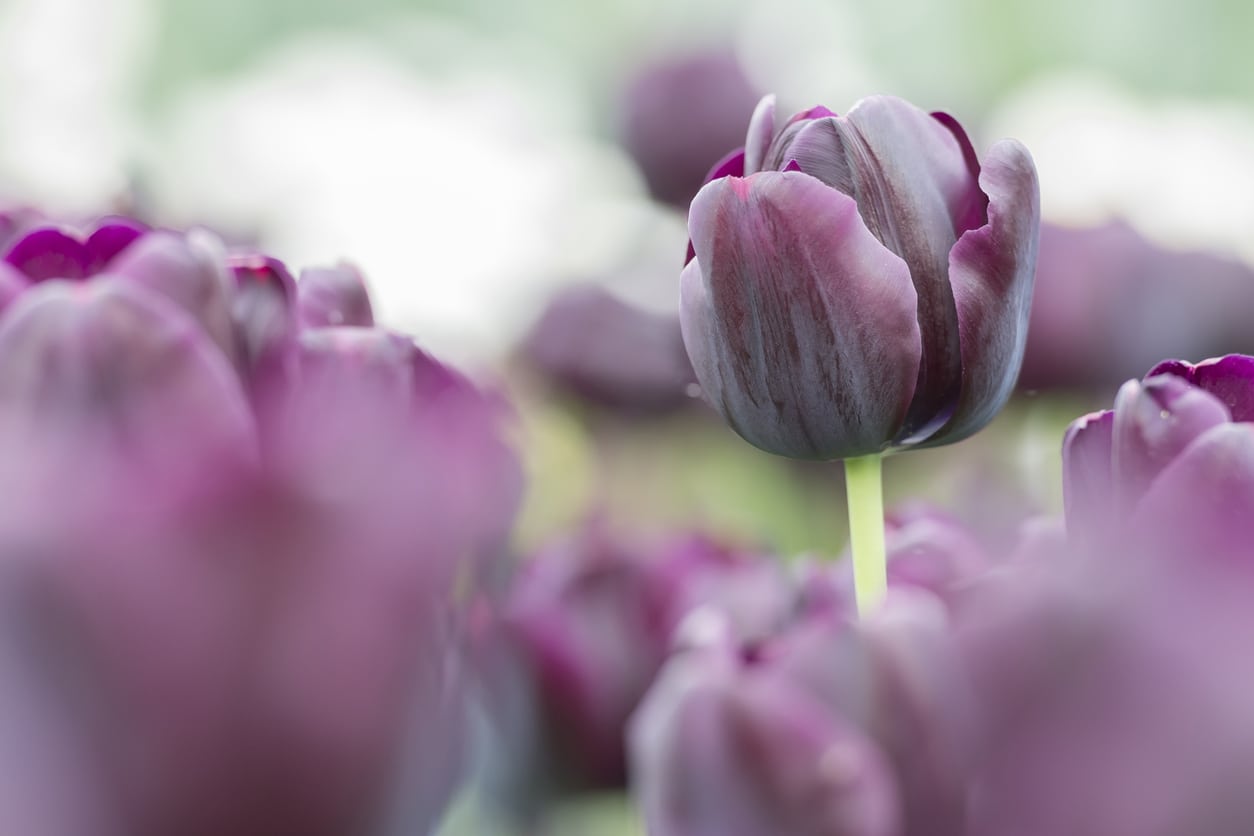Cottage Tulip Flowers – Learn About Single Late Tulip Varieties


Tulips herald the arrival of spring. These brilliant bulbs bloom from late winter well into spring. Cottage single late tulips are one of the latest bloomers, providing a color show in late spring when most other varieties are finished providing flowers. What are single late tulips? These flowers are also known as Darwin or cottage tulips and come in a range of colors from white to black and the rainbow in between. Continue reading for tips on growing and cottage tulip care.
What are Single Late Tulips?
If you are a fan of tulips, the last faded blooms mean you have to wait a whole year for more spectacular flowers. With cottage tulip flowers, you can expect blooms in late spring that often hang on until early summer. Their cup-shaped flowers are some of the tallest varieties among tulip bulbs. Single late tulip varieties have not only color diversity but may be striped or have feathered details. One of the beauties of fall planted bulbs is their ability to push up through the ground, even when there is a late snow. The single late tulip varieties are unlikely to face such a challenge, but their late season display is a feast for the eyes and fills in as you wait for summer blooming plants to explode with color. The flowers are chalice to egg shaped and stand proudly on stems of up to 2.5 feet (0.75 m) tall. There is a broad range of weather tolerance since Cottage tulip flowers are hardy in United States Department of Agriculture zones 3 to 8. The bulbs produce flowers in hues of red, orange, pink, purple, black, and white as well as bicolor blooms.
Popular Varieties of Cottage Single Late Tulips
There are many hybrids of single late tulips. Some of the classics are Triumph, Gregii, and Darwin. The Fosterianna hybrids are delicate and ethereal while the Lily hybrids sport slender, narrow blooms. For added fun, single late tulips come fringed, and in a frilled, striped parrot hybrid. Viridifloria hybrids have a green stripe among their scrunched, streaked flowers. Waterlily hybrids get their name from the resemblance to those aquatic flowers when fully opened. A super surprise comes from the Chameleon series, whose blooms change color as the flower ages.
Cottage Tulip Care
Prepare flower beds in fall by deeply cultivating soil and adding compost. Ensure the area is well draining, as the worst condition for bulbs is to be sitting in boggy soil. Incorporate some time release bulb fertilizer at planting. Tulips prefer full to afternoon sun. Plant bulbs with the pointed side up to the sky, 6 to 8 inches (15 to 20.5 cm.) deep and 6 inches (15 cm.) apart. These late bloomers look amazing in mass plantings. Allow the leaves to die back after blooming. This provides energy to the bulb for the next season's growth. Mulch over the area to prepare bulbs for winter and pull the mulch away in early spring to allow leaves to push up more easily.
Gardening tips, videos, info and more delivered right to your inbox!
Sign up for the Gardening Know How newsletter today and receive a free copy of our e-book "How to Grow Delicious Tomatoes".

Bonnie Grant is a professional landscaper with a Certification in Urban Gardening. She has been gardening and writing for 15 years. A former professional chef, she has a passion for edible landscaping.
-
 Looking For Plants To Give You The Soft And Fuzzies? Try These 5 Fuzzy Leaf Plant Options
Looking For Plants To Give You The Soft And Fuzzies? Try These 5 Fuzzy Leaf Plant OptionsLovers of texture, drama, silver foliage and tactile plants will adore these special sensory garden additions. These fuzzy leaf plant options will leave you all aglow
By Susan Albert
-
 Get Ready For A Summer Of Hummers! Grow These Full Sun Hummingbird Plants and Flowers
Get Ready For A Summer Of Hummers! Grow These Full Sun Hummingbird Plants and FlowersIf you’re lucky enough to enjoy a sunny backyard, make sure you are maxing out on your pollinator opportunities and grow these full sun hummingbird plants and flowers
By Tonya Barnett